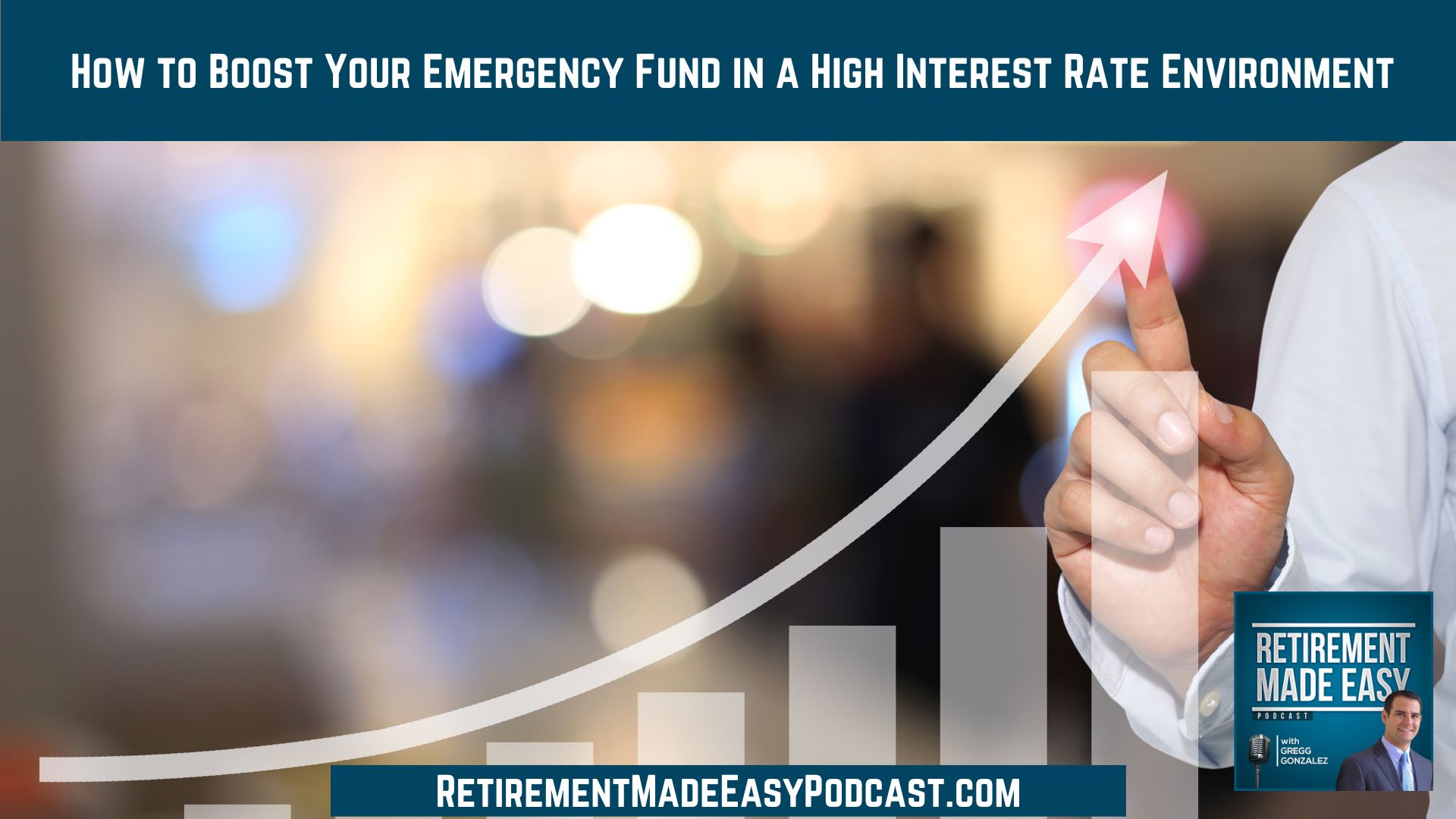
Emergency funds. Cash reserve funds. Safe money. They’re all the same name for money that you need to set aside for—you guessed it—emergencies. As interest rates continue to climb to combat inflation, what should conservative investors do? What opportunities should you take advantage of with rising interest rates? Should you look at bonds or fixed-interest investments? Higher interest rates make it easier for conservative investors to earn interest on their emergency funds. Learn what I mean by that in this episode of Retirement Made Easy!
You will want to hear this episode if you are interested in…
- [6:21] Don’t forget to check out RetirementMadeEasyPodcast.com!
- [8:30] The basics of an emergency fund (and why it’s so important)
- [10:57] The difference between an emergency fund and a sinking fund
- [13:31] What’s interesting about the rising interest rate environment?
- [15:28] What you need to know about the bucket strategy
The basics of an emergency fund (and why it’s so important)
An emergency fund is whatever you keep in your checking account, savings account, or money market account that is liquid. It simply means that you have immediate access to money that’s set aside for emergencies. Sadly, many people don’t have emergency funds. They live paycheck to paycheck and when they have an emergency, it goes on their credit card. Then they pay off the credit card when they get a bonus or have more money coming in.
Your cash flow situation in retirement is much different. Putting emergency expenses on a credit card won’t cut it. So what should you have saved for emergencies? At least 3–6 months of living expenses (and some people even prefer 12 months). If you live on $5,000 a month, 3 months is $15,000. 12 months would be $60,000. I’ve met people with $500 in their emergency fund and I’ve met some with $500,000 in it.
The point is to be able to cover large unexpected expenses such as medical bills, new tires, a new water heater, etc. You don’t want to dip into your retirement accounts to deal with an emergency. You want to have at least 3 months of living expenses saved.
The difference between an emergency fund and a sinking fund
If you have a large balance in your emergency fund, I usually ask if any money is earmarked for a future purpose, like a new vehicle, a wedding, etc. People often save to pay cash for a large expense in the near term. You can’t use your emergency fund for that. This would be a sinking fund. It’s set aside for a specific purpose.
A higher interest rate is great for emergency funds because you’ll earn more interest. It won’t be a lot, but your cash reserves will be making between 1–2%. With how high interest rates are right now, some money market funds are paying much closer to 2%.
What’s interesting about the rising interest rate environment?
You’ll be able to find yield, i.e. higher interest rates for more conservative fixed-rate investments (CDs, bonds, or bond-like investments). A year ago, these same interests in CDs were paying 0.5% to 1.5%. Now, they’re paying as high as 4.75%. As I’m recording this episode, the 10-year treasury bond is 3.05%.
Now, I believe the Fed will raise interest rates a couple more times this year to get ahead of inflation. That means there’s a high probability that bond-like investments may go as high as 5%. If you have bond-like investments that were paying 1.5% at the beginning of this year, now those same investments are paying 4–4.5%. You got a big raise in your retirement income.
Why not earn more than the long-term average of inflation? It can help you stay ahead of the cost of living. It’s an incredible opportunity. Learn more about taking advantage of high interest rates in this episode of Retirement Made Easy!
Resources & People Mentioned
Connect With Gregg Gonzalez
- Email at: Gregg@RetireSTL.com
- Podcast: https://RetirementMadeEasyPodcast.com
- Website: https://StLouisFinancialAdvisor.com
- Follow Gregg on LinkedIn
- Follow Gregg on Facebook
- Follow Gregg on YouTube



